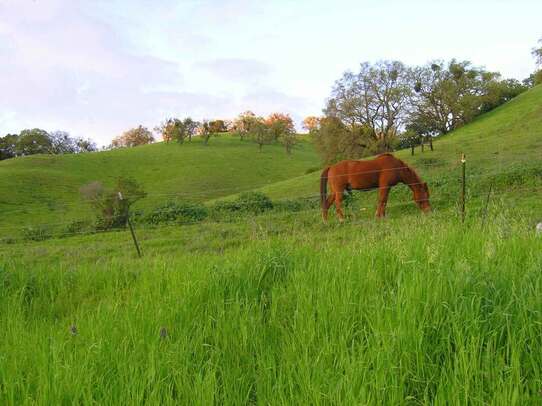About Living in Martinez…
|
Martinez is a historic waterfront town nestled between the Mt Diablo hills and the straights of Carquinez. A bustling shipping and trading town during the 1850’s gold rush, it was incorporated in 1876.
Martinez became the county seat for Contra Costa County in 1850, attracting permanent residents which led to its incorporation. The local Martinez Gazette newspaper started the presses in 1858, bringing news to the many settlers of the new town. At the same time, Martinez was growing a reputation as becoming a great shipping port bringing ships in from all over the world. The Central Pacific Railway arrived in 1877, becoming a part in the Transcontinental Line, and quickly becoming an important aspect in shipping. |
Martinez has a rich culture, quaint historic feel, and many bustling small businesses. Discover this hidden East Bay Area gem!
Naturalist and founder of the Sierra Club, John Muir, owned property in Martinez from a land grant. When the railway came, in exchange for the line going on his land, he requested a station to ship his crops and other goods around the country. John Muir Station Road is no longer a train station, but a bustling shopping center located on Muir Station Road.
The John Muir National Historic Site, where Muir’s home still stands, is located on Alhambra Avenue. It also features the Don Vicente Martinez Adobe, built by the son of the ranch owner, Don Ygnacio Martinez . |
The Alhambra Cemetery, a California State Point History of Martinez of Historic Interest, which has the grave of early trailblazer Captain Joseph Walker, attracts visitors from many areas interested in our rich culture.
Martinez is also the birthplace of Joe DiMaggio, the famous baseball player for the New York Yankees. The City also boasts the home of the Christian Brother’s Winery. The winery, now defunct, shipped wine throughout the country until 1932.
The Alhambra Water Company, known throughout the West Coast, was started in Martinez when landowner, L.M. Lassell, piped water from the Alhambra Valley mineral springs to a plant opposite the Historic Train Depot.
Gold rushers who could not find gold bought land to start their families. Merchants then came to cater toward the needs of the new residents. Many were Irish & Portuguese families who tenant farmed to save money for their own property. Many Italians also came to work in the Mt Diablo Mines. The Italians enjoyed fishing in the blossoming Marina, and eventually their families grew to have their own neighborhood in Martinez, complete with Italian bakeries and shops. Across town were the “Portuguese Flats,” where many Portuguese settled.
The arrival of the Shell Oil Company in 1915, one of the oldest refineries in the United States, created a residential boom, attracting laborers & workers, which led to the formation of younger towns throughout the Diablo Valley.
There is a large contingent of multi-generational Martinez residents who are deeply rooted in their local community. Many of these Martinez residents aspire to make the Alhambra Valley area of Martinez their home. The Alhambra Valley is steeped in history going back to the days when John Muir resided in the area.
The Alhambra Valley is contiguous to Briones Regional Park on the south side and Franklin Canyon to the north. Alhambra Valley Road is the back road to neighboring Briones, Happy Valley in Lafayette, and Orinda Downs in Orinda as well as San Pablo Road near Tilden Regional Park. If the City Limits signs were not present, you would have no way of deciphering the difference between these similar areas of this region.
Martinez is still filled with rich culture, a quaint historic feel, and many bustling small businesses. Discover this hidden East Bay Area gem!
Martinez is also the birthplace of Joe DiMaggio, the famous baseball player for the New York Yankees. The City also boasts the home of the Christian Brother’s Winery. The winery, now defunct, shipped wine throughout the country until 1932.
The Alhambra Water Company, known throughout the West Coast, was started in Martinez when landowner, L.M. Lassell, piped water from the Alhambra Valley mineral springs to a plant opposite the Historic Train Depot.
Gold rushers who could not find gold bought land to start their families. Merchants then came to cater toward the needs of the new residents. Many were Irish & Portuguese families who tenant farmed to save money for their own property. Many Italians also came to work in the Mt Diablo Mines. The Italians enjoyed fishing in the blossoming Marina, and eventually their families grew to have their own neighborhood in Martinez, complete with Italian bakeries and shops. Across town were the “Portuguese Flats,” where many Portuguese settled.
The arrival of the Shell Oil Company in 1915, one of the oldest refineries in the United States, created a residential boom, attracting laborers & workers, which led to the formation of younger towns throughout the Diablo Valley.
There is a large contingent of multi-generational Martinez residents who are deeply rooted in their local community. Many of these Martinez residents aspire to make the Alhambra Valley area of Martinez their home. The Alhambra Valley is steeped in history going back to the days when John Muir resided in the area.
The Alhambra Valley is contiguous to Briones Regional Park on the south side and Franklin Canyon to the north. Alhambra Valley Road is the back road to neighboring Briones, Happy Valley in Lafayette, and Orinda Downs in Orinda as well as San Pablo Road near Tilden Regional Park. If the City Limits signs were not present, you would have no way of deciphering the difference between these similar areas of this region.
Martinez is still filled with rich culture, a quaint historic feel, and many bustling small businesses. Discover this hidden East Bay Area gem!
Alamo • Alhambra Valley • Clayton • Concord • Danville • Lafayette • Lamorinda • Martinez • Moraga • Orinda • Pleasant Hill • San Ramon • Walnut Creek








